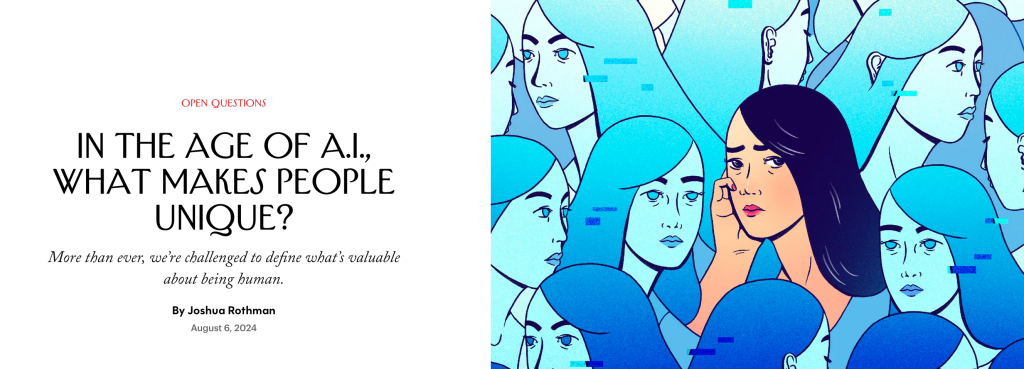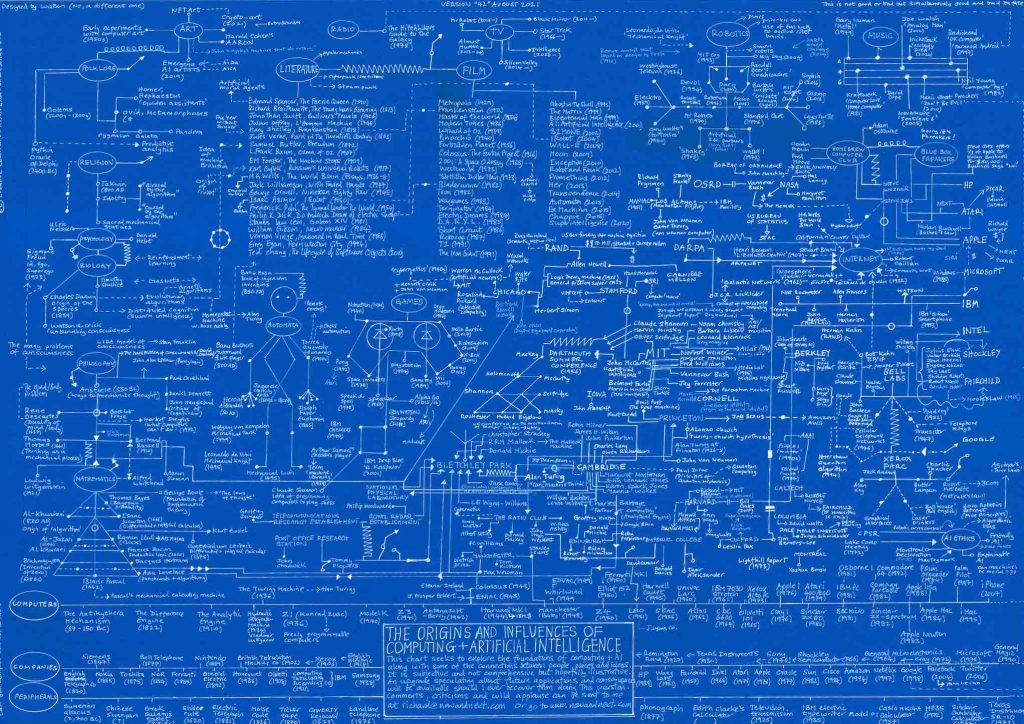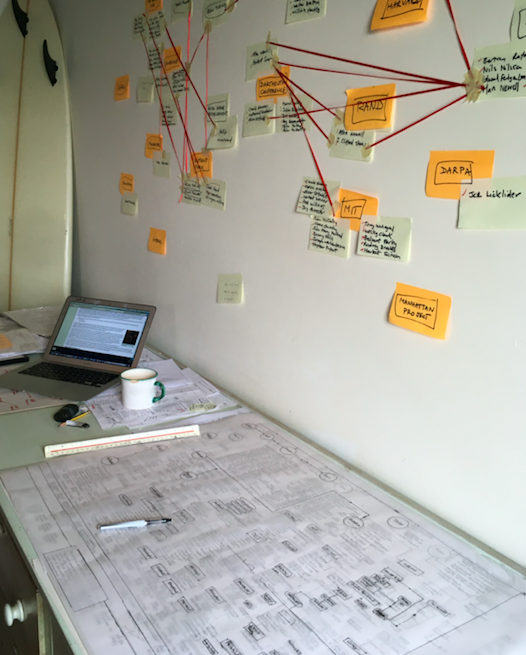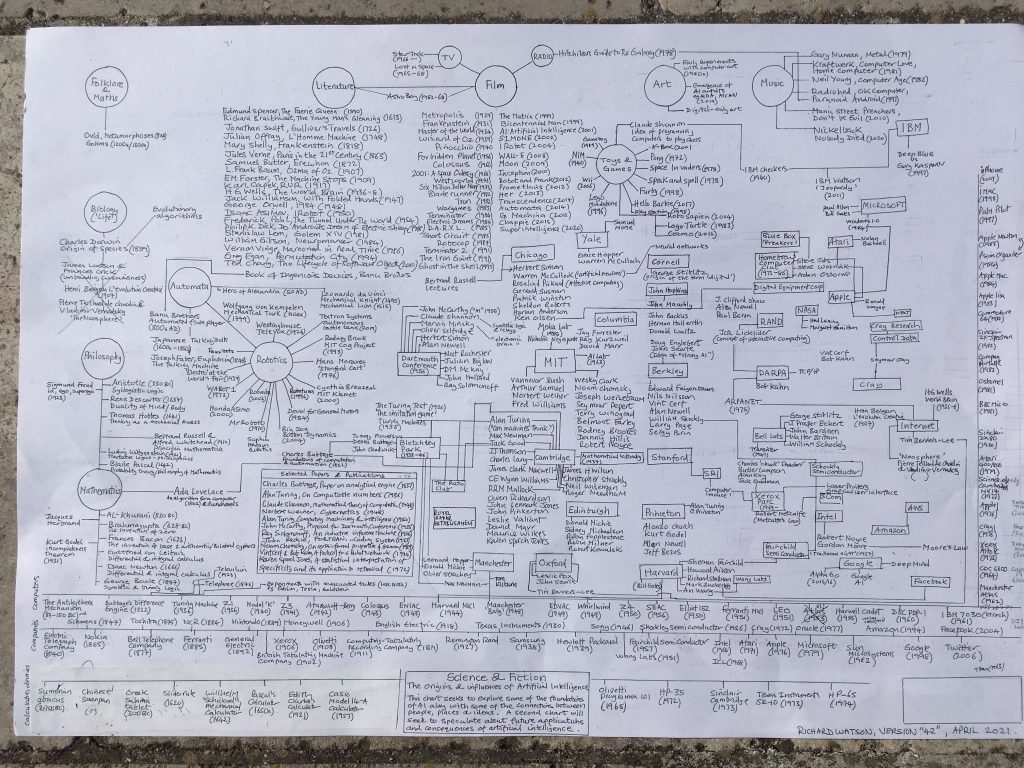
Off to a good start, but fell at the last fence I felt.
https://www.newyorker.com/culture/open-questions/in-the-age-of-ai-what-makes-people-unique


Off to a good start, but fell at the last fence I felt.
https://www.newyorker.com/culture/open-questions/in-the-age-of-ai-what-makes-people-unique
A history of computing and artificial intelligence on a single sheet of paper was always a little bit ambitious. Perhaps a little foolish too. Anyway, I’d like to think of this as the equivalent of Joe Cocker singing With a Little Help from My Friends at Woodstock in 1969 – an exhausting yet transcendent moment where mind and body meld together and time stands still. In reality it ended up taking me over and has become a bit of fragmented failure, although maybe one should think of it in quantum terms – simultaneously good and bad, its fate being linked to random events that may or may not occur.
Regardless, it’s been more fun to do than an adult colouring-in book. I did learn quite a bit doing it too (e.g. Nolan Bushnell saying “no” to the offer of 1/3 of Apple Computer for $50,000). It has perhaps laid some foundations to ‘map’ the future of artificial intelligence too. Make what you like of it. If you want to print this ask me for a higher resolution file (which I’ll happily supply for free) or I might print a few large copies myself, so do ask if you want one (smalll charge to cover printing and postage).


Just working on another revision of my artificial intelligence (AI) foundations map. But I like Greg Orme’s idea of turning this map into a series of monthly instalments, each looking at a particular area of computing, AI or robotics. So, for example, one could focus on how literature has influenced robotics and vice versa. Ovid’s Metamorphosis would be a good a place to start, but so might Mary Shelly’s Frankenstein, itself influenced by the Year Without Summer (1816), which was caused by the 1815 eruption of Mount Tambora in Indonesia. (Who knew one could draw a link between a super-volcano in 1815, Mary Shelley in 1818, Isaac Asimov’s iRobot in 1950 and Ex Machina 2015?). If you were really going for it you might even link a 2020 episode of Dr Who (The Haunting of Villa Diodati) in which abnormal weather is linked to the Cybermen.
Or we could look at the origins of the Internet (ARPANET, 1969-1990) and link this to ARPA/DARPA, JCR (Lick) Licklider, Bob Taylor, Vint Cerf and Bob Kahn, but also HG Wells World Brain (1936-8) and Pierre Teilhard de Chardin’s and Vladimir Vernadsky’s ‘The Noosphere’ in 1927 (also attributed to Le Roy). But did you know that Bob Kahn’s father was the futurist Herman Kahn, who worked at RAND, who provided the inspiration for the Dr Strangelove character in Stanley Kubrick’s 1964 film of the same name.
Anyway, bear with, a new improved version of the AI-sphere coming soon…and donl’ forget that once I’ve got the history of artificail intelligence done, my next job is to step into the future and speculate about the future of computing, data science, artificiual intelligence and robotics.
I think I’m getting somewhere with this. I often find that before looking forwards at the future of something, artificial intelligence, for example, it’s often worth going backwards to the start of things. This is a draft of a visual looking at the history and influences of computing and AI.
It needs a sense check, contains errors and is somewhat western-centric, but then I am all of these things. It’s also very male-heavy, but then that was the world back then – and in AI and IT possibly still is. Perhaps I should do a visual showing women in AI – starting with women at Bletchley Park, NASA and so on. I may spin this off into a series of specific maps looking purely at robotics or software too.

“Someday a computer will give the wrong answer to spare someone’s feelings, and man will have invented artificial intelligence.” – Robert Breault.
One day ladies will take their computers for walks in the park and tell each other, “My little computer said such a funny thing this morning”.
Alan Turing (1949?)